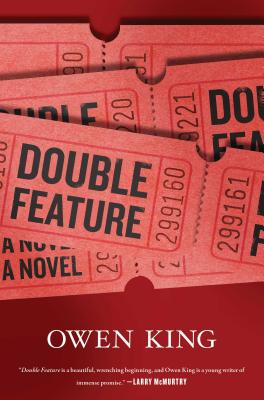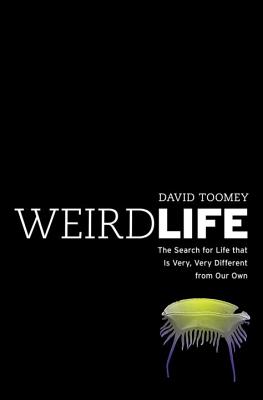UPDATE 3/27/13: The following review was written on an earlier version of Pandemonium. Having now read the two versions concurrently, I can tell you that there isn't a single page unaltered--but none of the changes are substantive. My review stands. In the time since this was originally published, Fahy has polished the prose to a high gloss. In addition to tightening the language, he's added tiny character moments, comic relief, the occasional great line of dialogue, etc. I'd read the first draft; this is the final. It held up remarkably well to a second reading, and I liked Pandemonium for all the same reasons all over again.
Additionally, I want to mention just how beautiful the design of the hardback novel is. In addition to the shiny foil cover, please know that there are eleven pages of gorgeous illustrations and maps at the back of the book--some of which are pasted below. They're an excellent resource as you read the book. I loved reading this on my Kindle, but I'm thrilled to finally have a copy to place on my bookshelf!
Nearly
Pandemonium opens just a few months after the events of Fragment. Fahy had left the door wide open for a sequel, and he steps right through it as the desiccated body of Thatcher Redmond washes up on a remote Japanese island, carrying it's deadly cargo of Hender's fauna. (Don't assume you know where this is leading. Fahy is always three steps ahead.)
Across the world, Nell and Geoffrey Binswanger are enjoying their first days of wedded bliss. Since their escape from Henders Island, they—along with colleague Andy Beasley—have been working with the five surviving hendros from the island. These gentle creatures have captured the world's imagination and are well on their way to winning their hearts. But the powers that be aren't sure how much freedom these alien intelligences should be granted. They are currently being held in comfortable isolation, but they are petitioning for full freedom—or at least internet access.
Nell and Geoffrey are shaking up the hendros' comfortable routine by going off on their honeymoon. However, just as they're about to depart for Hawaii, the two are given the proverbial offer they can't refuse. It’s a lucrative working vacation studying an extraordinary unknown ecosystem. Their benefactor is a slightly suspect Russian billionaire by the name of Maxim Dragolovich. And before anyone knows where they’re going, he’s whisked Nell and Geoffrey off to a subterranean world like nothing you’ve imagined in your wildest dreams, a world he calls “Pandemonium.” There, Nell and Geoffrey renew old acquaintances and make new ones, and at first it’s all so magical… I don’t want to tell much more. It’s far too much fun to make each delicious discovery on your own!
There’s a reason why sequels rarely live up to reader expectations. When an author has done his job really well, he’s created a whole new world in a book. No matter how great the second novel is, it simply can’t offer the freshness and originality of the first. Let me tell you why I think Fahy succeeds so well here.
First, he offers more of what he got right in Fragment. This novel moves at an absolutely breathless pace. I read it in a single day, and there was simply no way you could have gotten me to put this book down before I reached the conclusion. Fahy’s bread and butter is creating fantastic creatures, both magnificent and horrifying. He revisits some territory in Pandemonium, but he expands quite satisfactorily on what he’d created previously. His imagination is off the hook! But what I love the most is that everything he creates, from the environment, to the creatures, to the technology (which I’ll get to in a moment), is so thoroughly grounded in real, right-up-to-the-moment, science. It’s smart, it’s fun, and it’s truly a joy to read.
I criticized the character development in Fragment and I’m not going to claim that this is a nuanced character study. In fact, the main villain of this novel is again a bit on the cartoonish side, but this time he’s cartoonish in a good way! He’s definitely a more interesting, more well-rounded character. I don’t know that I learned a great deal more about Nell, Geoffrey, and Andy, but they’re likable characters and fulfill their roles admirably. This novel introduces a child character—always a dicey proposition—but I have to admit I kind of loved her. (Except, Warren, isn’t Sasha a man’s name in Russia?)
He definitely walks the same cuteness tightrope in his depiction of the hendros, or sels, or whatever you want to call them. It would have been so easy for them to become twee, but here again, I think Fahy gets the balance just right. I simply loved them. These characters are a golden opportunity for comic relief, like when they gather around to watch a movie and it’s Jurassic Park, LOL. But these creatures are more than cute comic devices. They’re supposedly possessed of great wisdom, and Fahy manages to illustrate that, such as with Hender’s oft repeated admonition for tolerance, “There is no ‘they.’ Remember? There is only one. And one. And one. No ‘they!’” He’s managed to create alien characters that are, if anything, more intriguing and complex than the human ones. Plus, they have a better grasp of social media than I do.
The latter part of this novel involves a military operation. This is where Fahy brings in the big guns. Literally. The military hardware and technology was just so cool! Here Fahy tapped into my inner child, and apparently my inner child is a 13-year-old boy. Who knew? But I was completely enthralled with the exoskeleton robot (think Avatar) worn by one character, the ROVs named after Dr. Who’s Daleks, and the sheer firepower assembled. As one soldier says, “These species may be more evolved for battle than we are, but we have the technology, folks. I guarantee they’ve never come up against what we’re bringing to the fight.”
So, yeah, there’s a fight. And no one is safe. Fahy may kill off your favorite character in the blink of an eye. He creates tension, jeopardy, adrenaline, and he brings it all home for a most satisfying conclusion. He hasn’t left the obvious open door to a sequel this time around, but there was one question he left unanswered… I can’t stop wondering if it was intentional. I sure hope it was.
The bottom line is this: If you liked the first book, I think you’re going to love this one.
NOTE: We haven't checked in with Warren Fahy in a while. Look for a new interview with him in the near future.













